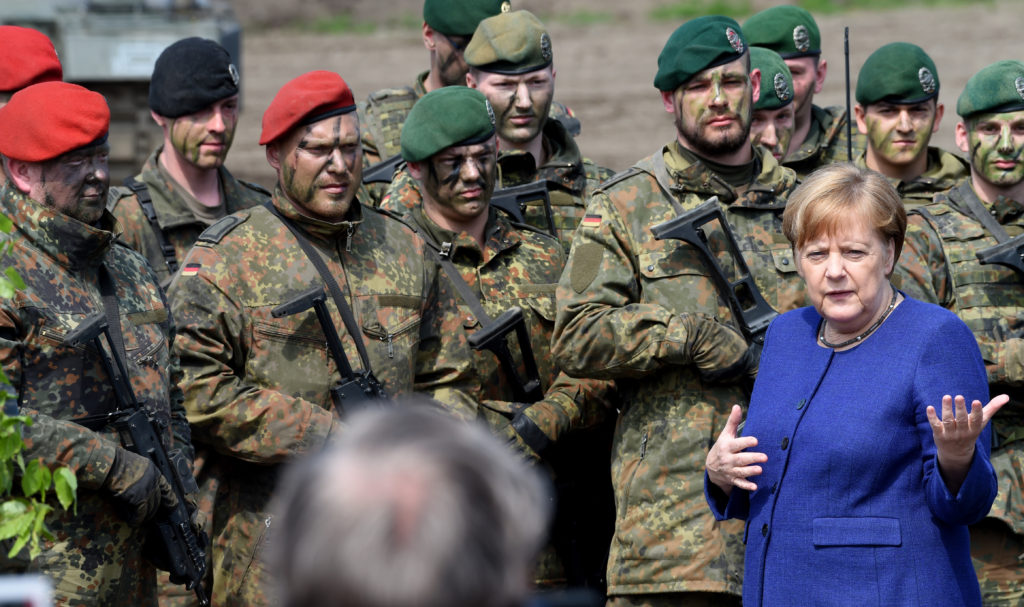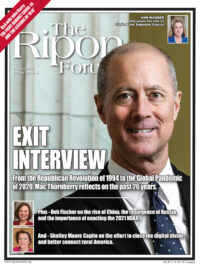
One need only pick up the paper, tune into a television news program, or go on social media to see that U.S. relations with Europe are anything but “business as usual,” and that the differences do not concern simply the personal styles of President Trump or individual European leaders.
Since so much coverage is focused on personalities, the media often miss the larger structural shifts underway in transatlantic relations, with editorializing frequently obscuring what is taking place. In reality, the devolution of transatlantic relations goes beyond any particular administration – though the tenor of it has varied over time – and reflects fundamental shifts in power distribution and the geostrategic challenges facing the United States and its European allies.
We are at an inflection point after three post-Cold War decades, and the choices confronting the United States when it comes to its relations with Europe, including NATO, our oldest alliance, will shape transatlantic relations going forward. There are a number of differences between the United States and its allies in Europe when it comes to the economy and trade relations, from Germany’s decision to go ahead with the Nord Stream 2 pipeline with Russia despite U.S. opposition to it, through the use of Huawei G5 technology in some European networks, which the U.S. opposes on security grounds, to weapons platform acquisitions, most notably Germany’s decision not to include the F-35 into its fifth-generation aircraft competition. Still, no issue has registered as significantly as the question of defense spending, and what the Trump Administration has considered “free-riding” on defense by a number of U.S. allies.
We are at an inflection point after three post-Cold War decades, and the choices confronting the United States when it comes to its relations with Europe, including NATO, our oldest alliance, will shape transatlantic relations going forward.
One reason for the current flux in transatlantic relations is a direct consequence of the end of the Cold War. The 1990 unification of Germany and the subsequent implosion of the Warsaw Pact, and ultimately the Soviet Union itself, changed the relative power equation both on the Continent and globally. On one hand, the United States emerged from the Cold War as the sole superpower, with resources that prompted many to speak of the dawning of an era of “unipolarity” in which America would become a de facto global hegemon, its power unmatched. At the same time, with the disappearance of the Soviet threat, Europe’s need for American security guarantees declined exponentially, for the allies no longer confronted a hostile bloc intent on invading them should war break out.

This was visible not only in the dramatic cuts in European defense budgets across the board, but also in the way in which NATO’s objectives were redefined in the 1990s and the first decade of the 2000s, with “out of area operations” such as Kosovo and NATO enlargement into former Eastern Europe becoming defining missions. Moreover, the continued weakening of the Russian Federation under President Yeltsin, as well as Russia’s failed efforts to democratize and create a market economy, were seen as a vindication that Francis Fukuyama’s “end of history” was indeed coming to pass and that the liberal international order was ascendant around the globe. The U.S. approach to communist China during the past three decades also reflected the seemingly boundless confidence of American policy elites that globalization and export-driven modernization would transform the PRC into a “responsible stakeholder in the international system.” And as the United States post-9/11 pursued the Global War on Terror and Europeans lent limited support to American counterterrorist campaigns, there were early warning signs (the 2003 Iraq war) that a number of our key allies in Europe were not willing to sign on to the US national security agenda.
It took multiple warning shots in the 2000s, from the Russian invasion of Georgia in 2008 to Putin’s seizure of Crimea in 2014 followed by a war in western Ukraine, to finally shake the policy consensus. Most important among them were the 2008 economic crisis and (for Europe) the 2015-16 immigration wave from the Middle East and Africa for which the European Union was woefully unprepared and which began to fragment the EU’s already tenuous internal cohesion. The 2016 election of Donald Trump as President not only shocked the European policy establishment, for virtually no European capital expected it, but also added to the friction when it came to intra-NATO relations, for President Trump had insisted from his first day in office that the Europeans fulfill their pledge to spent 2% of their GDP on defense, arguing that the current arrangement in which the United States contributes 70% of all NATO defense spending was simply unfair when it came to burden-sharing. Although the European allies did step up on defense, increasing their outlays by $43 billion between 2016-18 (and, according to NATO Secretary-General Jens Stoltenberg, promising to increase their outlays by an additional $400 billion by 2024), only seven of the now 30 member-states have met the requirement, and the situation is even more dire when it comes to the ability of individual nations to field real, usable, and exercised defense capabilities.
With the United States Joint Force no longer structured to engage in two major theater operations at the same time after almost 20 years of continuous warfare, European rearmament is critical to ensure that, in the event of a crisis in the Indo-Pacific that would focus our attention and resources there, deterrence against Russia holds.
The defense spending issue remains central from the U.S. perspective not so much because of the administration’s allegedly “transactional” approach, for complaints about insufficient defense spending were voiced by a number of U.S. administrations – Democrat and Republican alike. Rather, the urgency of the issue reflects the realization in Washington today that the West faces two near-peer competitors when it comes to military power, with Russia acting as a revisionist power intent on revising the post-Cold War order, and China as a state determined to replace the U.S.-led international system with a version of its own. The United States sees China today as both a military and economic problem set, while Europe still looks at China as mainly an economic issue, which although increasingly problematic, nonetheless provides a key economic opportunity, especially as China’s Belt and Road Initiative and its 17+1 format for engagement with Europe carry with it (from the vantage point of Europe’s largest economies) the promise of greater access to the Asian market.
With the United States Joint Force no longer structured to engage in two major theater operations at the same time after almost 20 years of continuous warfare, European rearmament is critical to ensure that, in the event of a crisis in the Indo-Pacific that would focus our attention and resources there, deterrence against Russia holds. This makes the issue of defense spending by the Europeans a vital one. The key question for transatlantic relations today is whether our principal allies on the Continent, especially Germany, will reach a broader consensus with the United States about the nature of the threat confronting us all and about the actions the allies must take to keep NATO viable.
Andrew A. Michta is the dean of the College of International and Security Studies at the George C. Marshall European Center for Security Studies in Garmisch-Partenkirchen, Germany. The views presented are his own and do not necessarily reflect those of the George C. Marshall European Center for Security Studies, the Department of Defense, or the United States Government.




